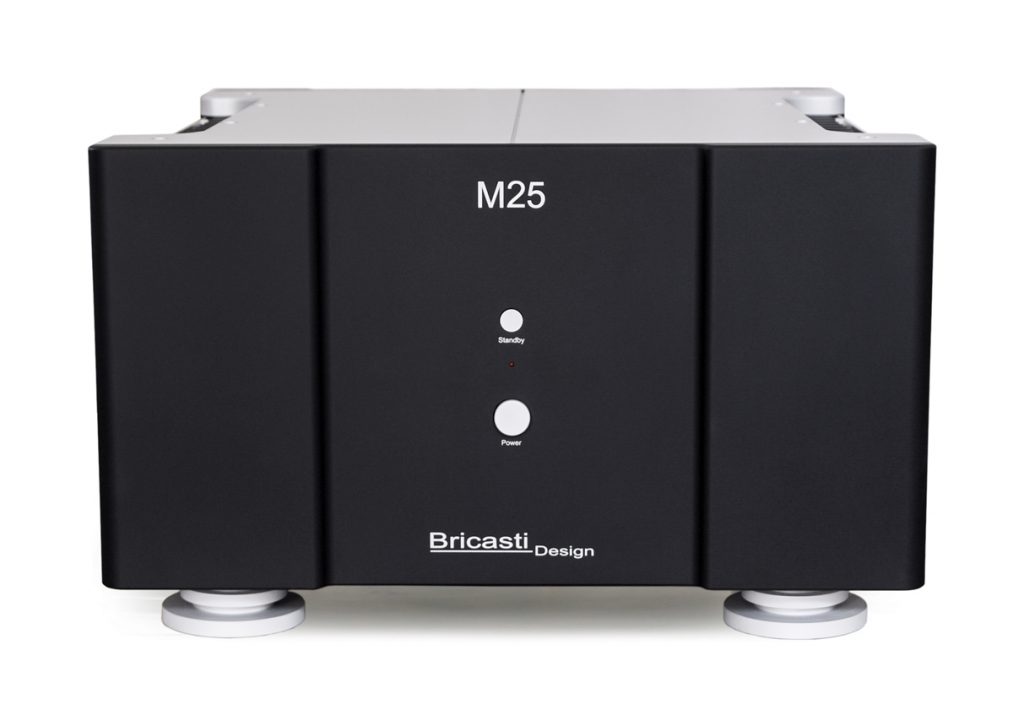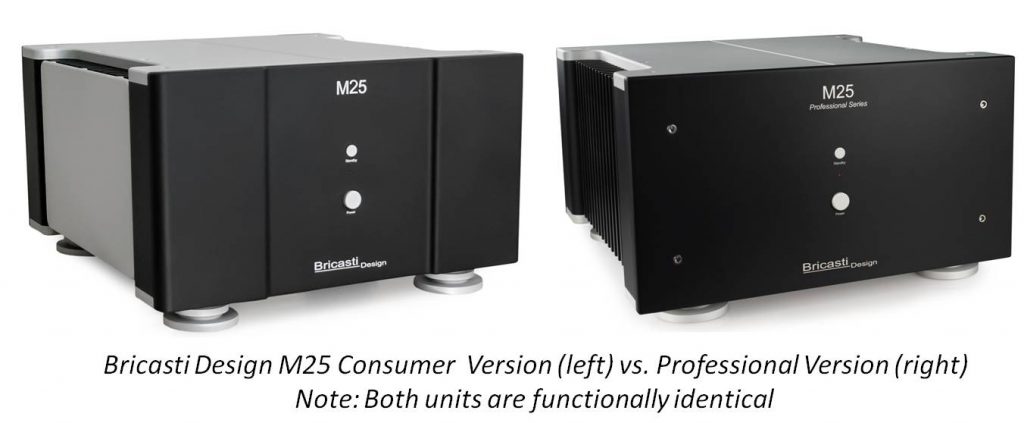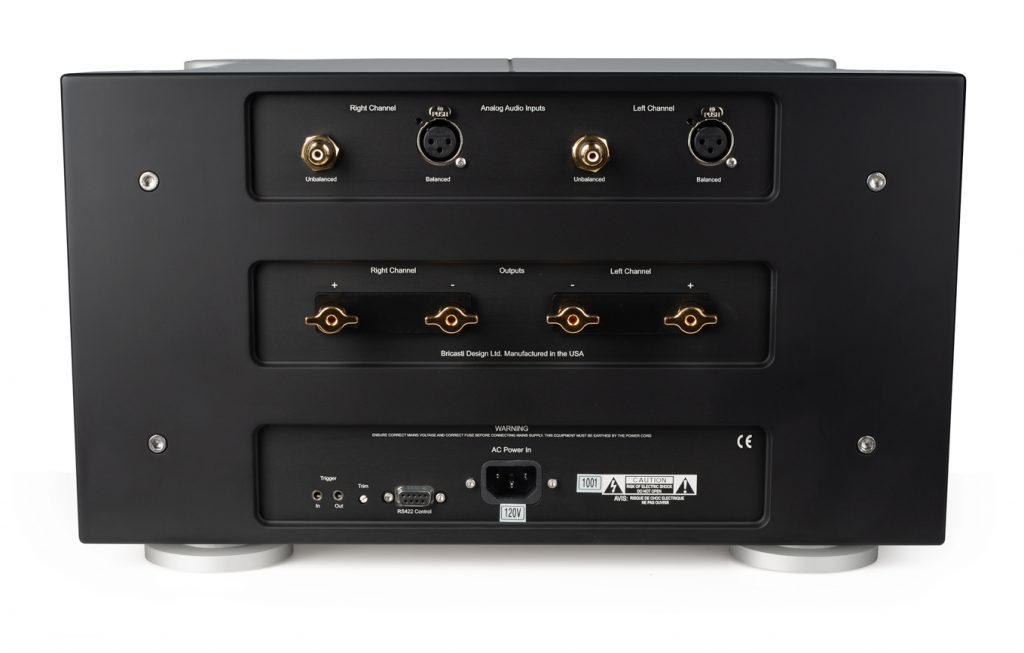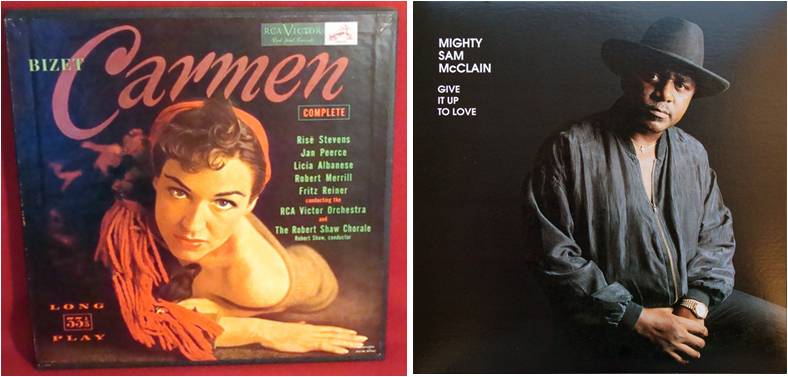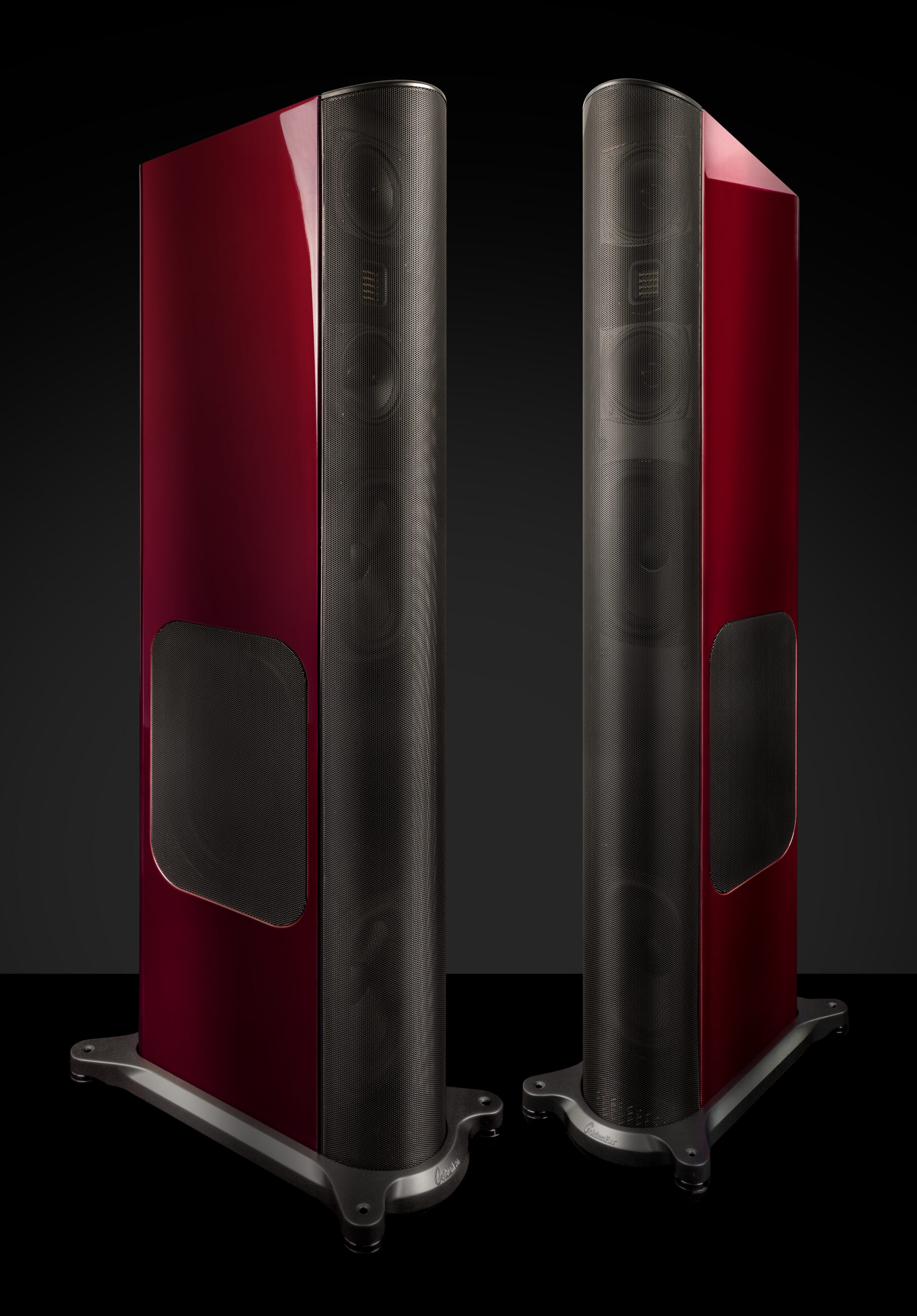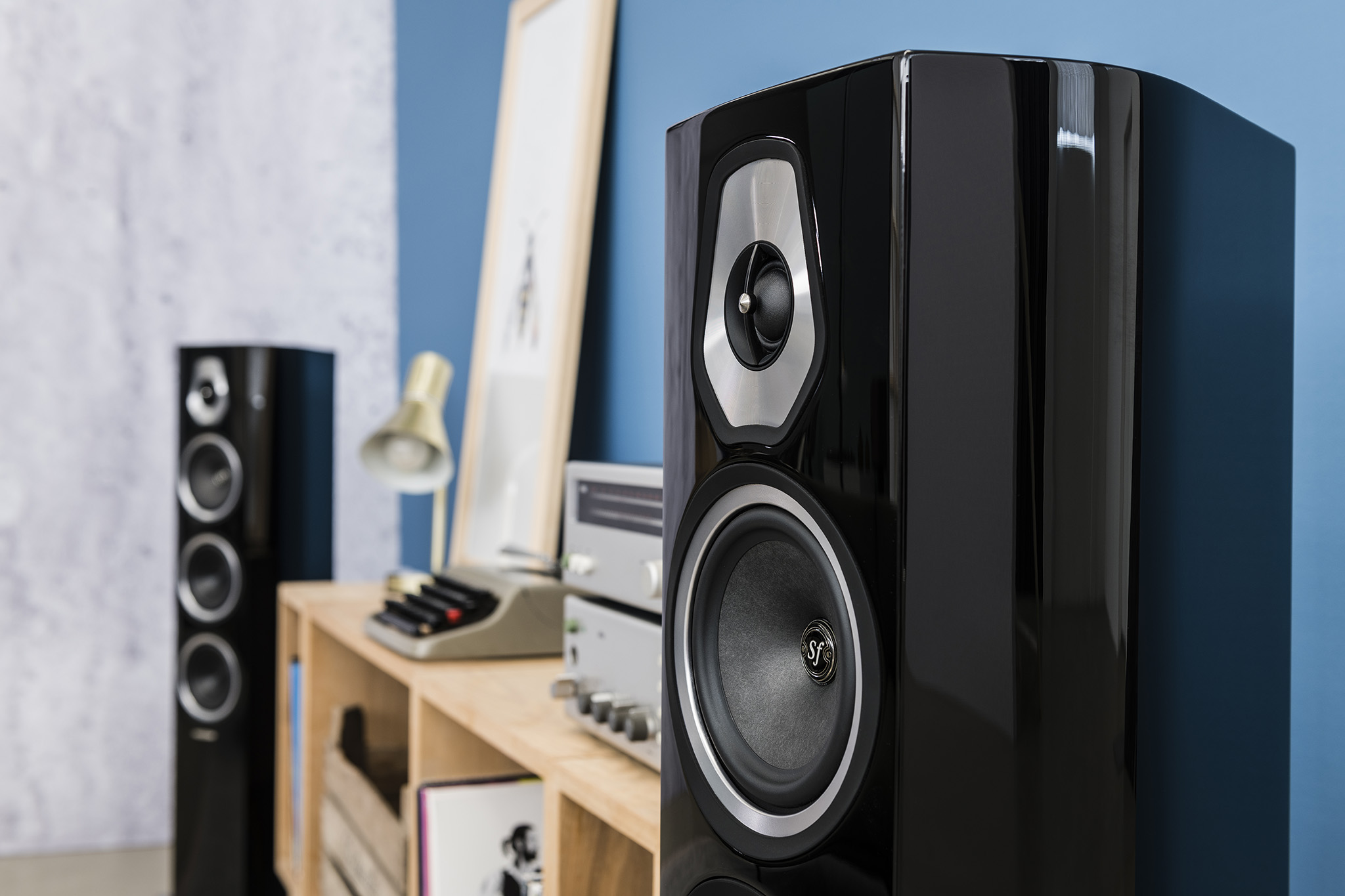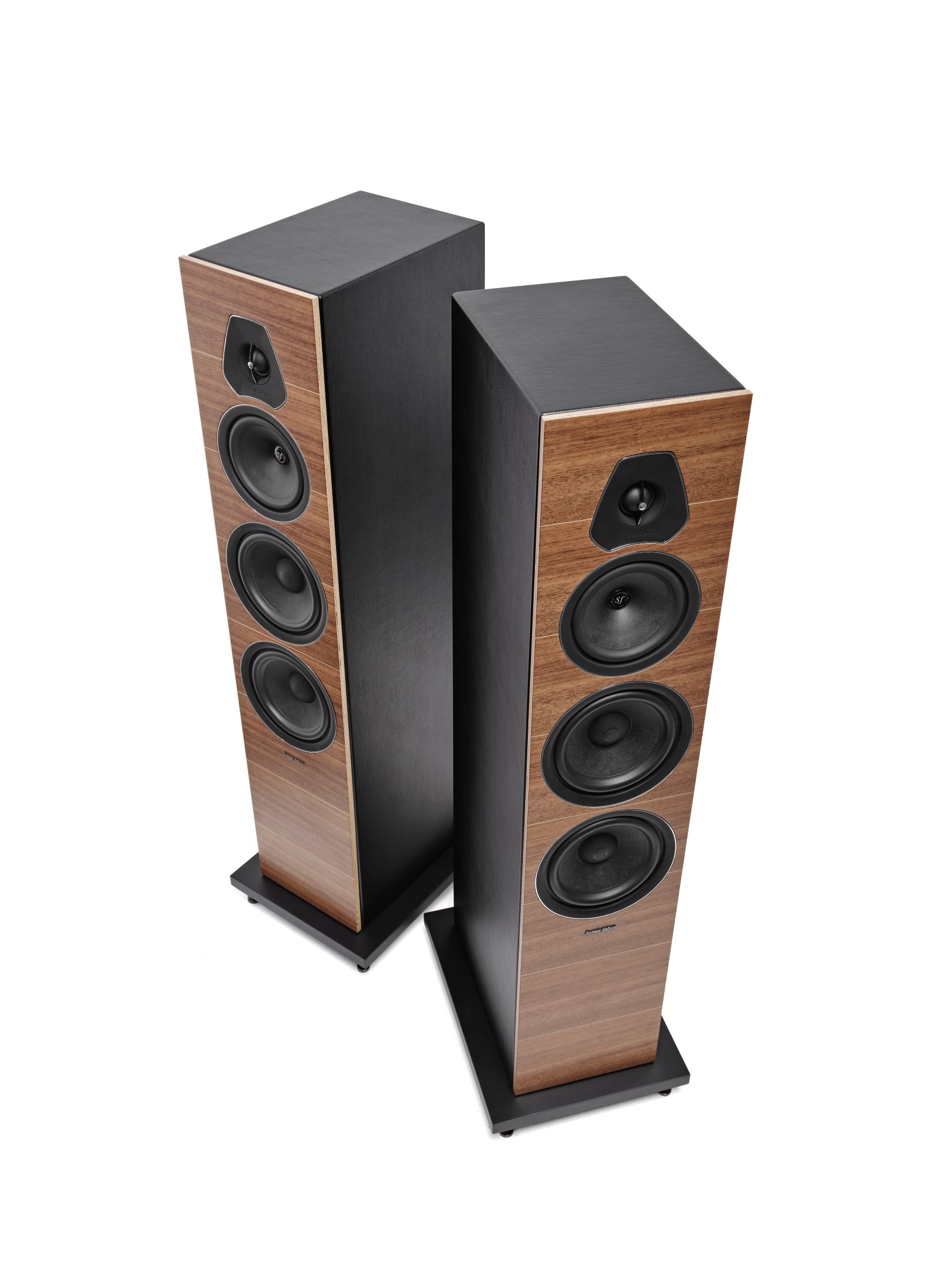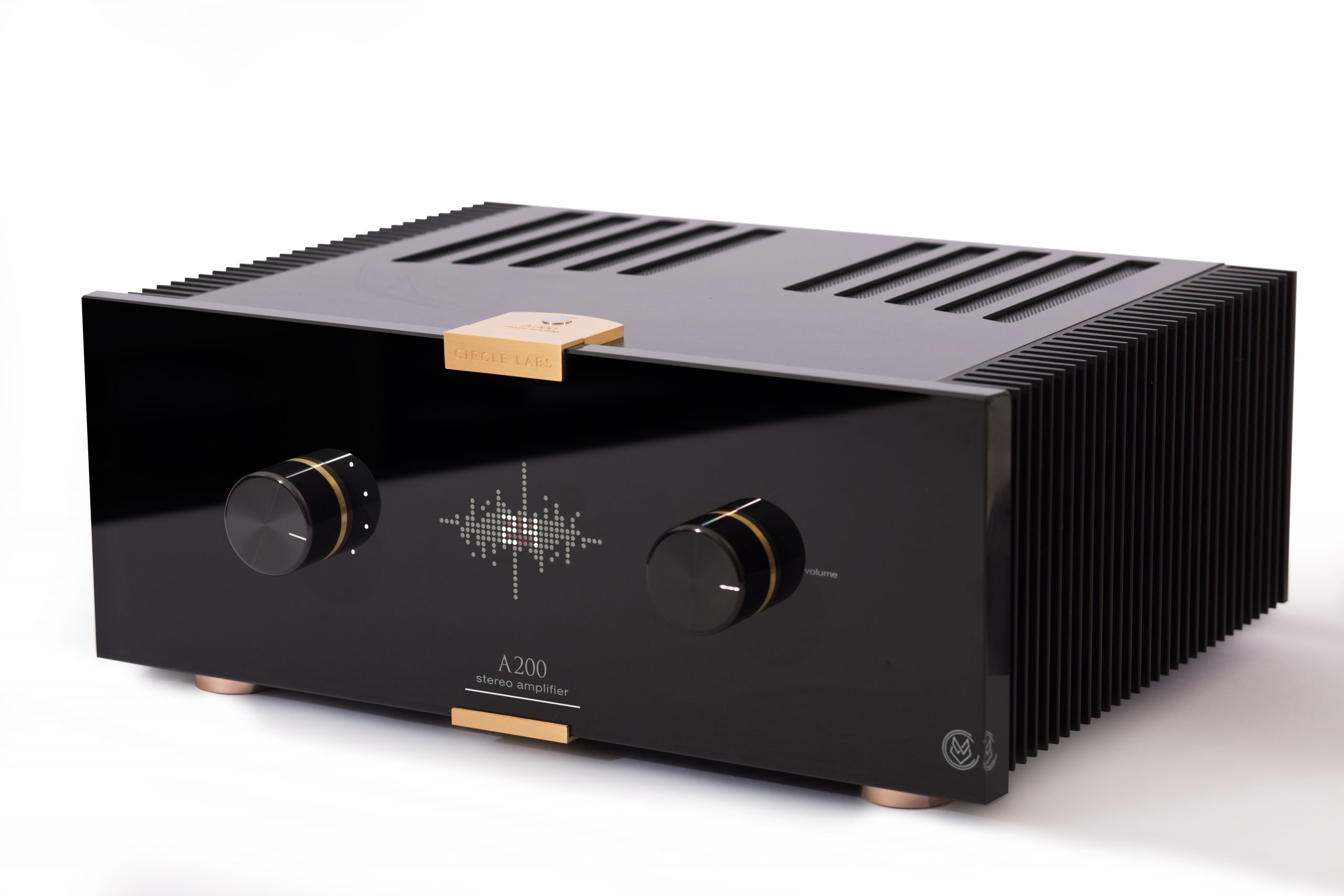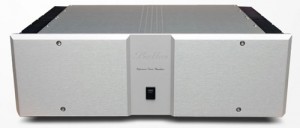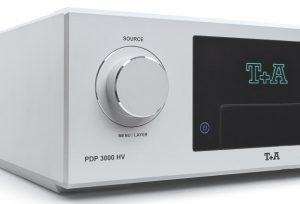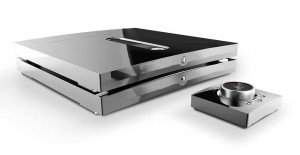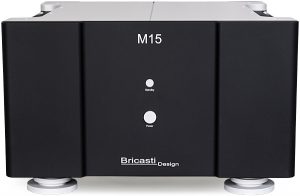This is the real deal. Or at least that was the knee-jerk emotion that flooded in during the first few notes from the Bricasti Design M25 power amplifier (M25) as it first drove my loudspeakers. Sure; the M25 had drive, poise, a neutral tonality, and an impeccably tidy soundstage. But most well designed high-power amplifiers do, so what was this initial whip-snap about? While there is no absolute perfection in the world of audio, that is a question worth digging into, since the M25 has settled itself right at the crossroads of real high-performance, and life-like (not simply "live") presentation of the music.
A Little Background
My first run-in with Brian Zolner, President of Bricasti Design, was about a decade ago. My colleague John Marks phoned me with the excited innocence of a child who had just found a penny, heads-up. He had this new, amazing DAC (Bricasti M1) from a well-respected, pro-audio company looking to make a mark in the HiFi world. Bricasti has since inked in quite a presence in both the professional audio and high-fidelity audio markets with a wide, no-compromise product line.
This was also the very first time I have ever heard digital best the best of the best analog, and it was doing so with Redbook 44hHz/16-bit material. As usual John was correct in his excitement, and the M1 has moved on to win multiple awards and find a home in my system. Brian was there during that experience and gladly answered all of my questions. After several more positive interactions over the years, I recently reached out to him to ask a simple question about my M1 which led into a discussion regarding Bricasti's latest products. A light went off when I realized that the new M25 would be a wonderful match for my system based upon its drive capabilities, and that it is designed to mate with the Bricasti M1 DAC, M12 source controller, M21 source controller, and new M3 DAC. With the M25 in my system, the entire signal chain would be fully differential (balanced), and that was something worth trying out.
I have experienced a handful of top-tier amplifiers over the years, but mostly in demo rooms and short listening sessions in living rooms. I had never heard one that would directly compete with the M25 in my own system. Some notable, amplifiers that ran high in the pack of high-performance are the Audio Research VT200, the Krell FPB600, and most recently the MSB M204, and Bricasti M28. There are a few others, but they seem to have faded in time to an ember of a memory.
The common thread in the notable units, however, was a distinct and sizable gain in performance over an amp like the Parasound A21+ (HERE), which there should be! The Parasound A21+ sells for much less than half the price of these heavy hitters, and is why Parasound offers the JC5 monoblock amplifiers, which I have not heard. While I cannot say the performance of the forgettable top-tier amplifiers was much better than that of the A21+, I can say the M25 will be forever etched in my brain.
Sizing up the M25
There are two versions of the M25. Both versions are functionally identical. At $18,000USD, the consumer version adds some cosmetic and stability upgrades over the pro version. This includes blinding the screws on the front panel, connecting the front and back of the chassis with a plate over the front fascia of the heat-sinks, and Still Points isolation devices built into custom-made, anti-vibration feet.
I received the Pro version and between the extreme precision-fit of the entire chassis that is milled from solid aluminum billet, and the subtle matte, dual-color finish of black and natural aluminum, I am unsure why anyone would ever need the consumer version. The pro version is just stunning, and looks the part of a top-tier amplifier despite the chassis differences that bring the price down to $15,000USD.
According to Bricasti's website, the M25 tips the scales at 90lbs and carries that weight in a package that is ten and a half inches high, seventeen inches wide, and eighteen inches deep. The M25 will fit into ventilated stereo racks. On the rear panel there are two pairs of extreme duty, solid copper binding posts that are gold plated. Top quality unbalanced RCA inputs, and balanced inputs live in the back of the M25 also. To the left of the ubiquitous IEC line input is an RS422 port that is for diagnostic use at the factory only, and a trim control that is settable with a small flat-headed screwdriver.
A knob fitment over the trim control adjustment with identification for each step on the back panel would be most useful. Setting a screwdriver into a small plastic piece, into very expensive equipment, does not pass the heebie-jeebies test. Bricasti details how to adjust the trim in the user manual. There are 4 steps (including 0dB, or maximum) of 6dB of trim for a total of 18dB of possible attenuation. This is done via logic-controlled relays to assure there is no added distortion in the signal path. The trimming is done at the input and allows for better system integration. Matching gain from component to component via trim promotes enhanced synergy from a system since the electronics can be fine-tuned to work in their comfort zone regardless of the loudspeaker's efficiency.
The dual 10" woofer, 4-way loudspeakers I used for the evaluation of the M25 are quite efficient so I found a single step (6dB) of trim to be useful; in theory it minimizes bit-loss from the M1's digital volume control. This turned out to be more for mental relaxation than actual practicality. It is arguable whether there is an audible difference in ANY DAC controlling the gain in the digital domain verses analog.
Digital volume control involves the dropping off of digital bits, and technically this means a worse signal-to-noise ratio, but this is typically accounted for in an individual DAC's design. The introduction of a passive attenuator may allow the preservation of all bits, which ultimately preserves the signal to noise ratio in one form, but those components themselves can affect the signal in worse ways, and lead to an even noisier outcome. Without getting too far off track it is safe to say all volume control is a form of loss in one way or another, so pick your poison. That said, there was no conclusive audible difference between 0dB of trim and 6dB of trim in my system, though having the numbers on the display of the M1 in a more ideal range of operation was a nice thing to see.
The M25 delivers 150 watts per channel into eight ohms, 300 watts per channel into four ohms, and 600 watts per channel into two ohms. The THD+N is specified as 0.005% 20Hz-20Khz at full rated power into eight and four ohms. This is absolutely world class, and one of the largest advantages of a differential design. Differential amplifiers are used all the time on small signals in electronics because they are exceptionally low in noise, but are difficult to implement for large signal needs like driving a pair of loudspeakers.
A fully differential amplifier essentially has two complete amplifier sections per channel instead of one. One amplifier is the normal waveform, and one amplifier is the inverse of the normal waveform. When the difference between these two amplifiers is taken, you have your output signal. This is important because any distortion introduced into either signal occurs in a like manner on both the normal and inverse signals. Since this noise is the same, and not the inverse, when the difference of the signals is taken, the noise is cancelled out. A very simple (perhaps oversimplified) way is to think of this is: 1 part noise + (-1) part noise = 0 parts of noise. The big, fancy name for this is common mode rejection.
As the last notable points: Pin two is hot for all balanced connections and Bricasti recommends using the included jumpers between pin one and pin three when using single ended, RCA inputs. Jumping pin one and three is critical. Not doing so will only utilize one-half of the M25's capability which will result in a severe degradation of the sound. The balanced input impedance is 200KOhms and the unbalanced input impedance is 100KOhms.
Let's Listen! Digital
It does not matter how long anyone has been an audiophile, the level of education one possesses, or how many times you may have wired up a system, we are all human first. I implore anyone setting up any system to take their time. The M25's binding post connections for the speakers are arranged in a (+/- -/+) arrangement. Other amplifiers may be (+/- +/-) or even (-/+ -/+). Binding post layout not being standardized is a good thing for manufacturers so they can optimize the signal paths within an amplifier.
Due to this, however, it becomes very easy to erroneously wire the loudspeakers to the incorrect channel, or out of phase, or both! Bi-wiring only increases the chances, too. One channel out of phase is easy to catch, however both out of phase, swapped, or just a single woofer section of a bi-wired loudspeaker pair out of phase may be harder to identify. Sadly, this will seal the fate of an amplifier before the first note is even played, since the amplifier will take the blame, not the connections. A little imagination will reveal why this tidbit was brought up at this point in the review!
I always start my listening with the channel phasing and ID tracks from Stereophile's Test CD 2. It is funny how this has become a sort of "sniff test" of performance without my awareness of it, that is until I heard it on the M25. The channel ID and phase check has graced my ears so many times on so many different systems; I subconsciously knew what I was listening for in terms of performance, as well as utility, and it was right from the first slap of the bass guitar. I knew the M25 was the real deal.
I was sitting off axis, too. This was because Brian was gracious enough to drive down to my house with the M25 spinning on his finger-tip, akin to a Harlem Globetrotter with his basketball. Well, perhaps not the last part. However Brian was interested in hearing my large loudspeakers, since he has happened across a few of my designs in the past when our journeys have crossed paths. It was difficult to contain my excitement, even off axis, as I rifled through some selections for Brian because I knew soon enough, I would be listening to my favorites through the M25 in the sweet spot!
The Parasound A21+ that has been residing in my system is rated at 500 watts per channel into 4 ohms, while the M25 is 300 watts per channel into 4 ohms. This 40% reduction in power was not worth a hill of beans, in fact, the M25 had not just more, but a whole new presence and control of my 4 ohm nominal loudspeakers that I did not imagine was possible. It did so at all levels, too. Its weighty and powerful low frequency response which never seems to run out was astounding.
The M25 can do far more than control bass. I found this out while playing Telarc's recording of Brahms Ein Deutsches Requiem, directed by Robert Shaw, and featuring the Atlanta Symphony Orchestra and Chorus. Right from the opening of the first track "Selig sind, die da Leid Tragen," the air and the envelopment of the hall's ambiance were present as if I were truly there. Present in abundance was the realistic, subtle background noises of the choir moving on the risers, and the soundstaging of the orchestra, that extended well beyond the speakers.
The breath and air of the strings maintained their true-to-instrument body and woodiness, and when the chorus first joined in, each vocal section was definable in space and true to a live choral sound about ten rows back in a concert hall. This deeply struck home for me since I spent a great deal of my younger years singing traditional choral music, and then barbershop choral music with the Narragansett Bay Chorus. I cannot pick nits about tonal balance or timbre since everything was just effortless and correct. Large, well recorded, complex music was obviously the M25's comfort zone.
In the world of studio recordings I decided to use The Holly Cole Trio's 1993 album Don't Smoke in Bed. First track was "The Tennessee Waltz." Their rendition, both instrumentally and vocally of this 1946 classic written originally by Redd Steward and later brought to fame by Patti Page, is quite beautiful. Even more so with the M25 providing the delivery.
I was hearing new subtly in the music, especially in Holly's vocals, that I never heard before. The vocals just felt real. All of the artistry, and time spent by the Holly Cole Trio capturing the emotional essence and message of this song was laid out as if they were in front of me. Again the overall character of everything was just true-to-life. There was no searching for "its character is this, but not that" in the presentation of the M25. This also held true through their rendition of the classic "Que Sera Sera," where her cheeky vocals and slow groove of the trio was just beautiful. Alas there are no free lunches and I began to realize, while my system in this form is everything I have ever hoped to achieve, it may not be for everyone.
We all have different musical tastes, and even biases. That is okay, despite what many may believe. At times, our tastes may lead us toward a system that contains more warmth, or focuses on one part of the sound such as the midrange. Some people prefer the sound of small speakers over large ones. The bottom line is that we are all willing to live with trade-offs, one way or another, to get to the sound that touches us the deepest, even if that trade off is simply size and expense.
As I progressed through more recordings, I found the abundant power, dynamic capability, and drive of the M25 to be too much at times. This occurred when listening to highly compressed recordings such as the Red Hot Chili Pepper's One Hot Minute. I also found this feeling to pop up now and again when listing to recordings that aren't the best, but are favorites for the sheer musical performance, such as Bill Evans' The Complete Village Vanguard Recordings.
This may not be the fault of the M25. This could be a myriad of things, from the recordings to my own loudspeakers, however it was the M25 that brought this to light, and I had to reflect on the question, "If every other responsibility and obligation of mine were settled, and I had $18,000 to spend on an amplifier, would I buy the M25 over any other potential amplifier in this price range?" Well, that is a resounding "YES" for me and my musical tastes, and without question, because when I want to seriously listen and get lost in the music, the M25 does this for me in a way I have never experienced anywhere, or thought was possible in my system.
Enough philosophy and back to the music. Bela Fleck and the Flecktones' Live at the Quick is sheer mastery on stage. This live recording grooves, bounces, has chanting, scat-singing, horns, and some of the most talented playing (NOT overplaying) of all the instruments involved. "That Old Thing (intro)/Earth Jam" sets the pace with a groovy back-beat timing that puts meaning in the quip that announcers from Monster Truck shows like to use: "We'll sell you the whole seat, but you will only need the edge!"
That feeling, too, is even before listening on the M25. The M25 only further enhanced the album and made the experience as true to being in the audience as one could ask for in their listening space, right down to the errant screams and clapping of overly excited audience members. Nothing was anchored to the speakers, rather wholly defined in space. I found by track 9, "Lover's Leap," I was listening at near concert levels! I did eventually snap out of it and return to a more reasonable, but no less intense volume. The M25 never showed signs of audible fatigue, and was only mildly warmer to the touch than on standby by the time the adrenaline rush was over.
Let's Listen! Analog
So far the M25 has surpassed my expectations, however from the standpoint of objectivity, and given the scope of this amplifier, this result should be expected. This has been an easy go for the M25 thus far since it is being utilized in its ideal circumstance, driven by the Bricasti M1 DAC/Network Player. While I am sure it is not a one-trick pony, it was only right to test the M25 in a "not ideal" circumstance. I fired up the Rega P1 table with its Carbon cartridge along with the Parasound P6, and ran the balanced connections out to the M25.
It won't fetch much in the used market, but I was generously gifted an original RCA Red Seal mono copy in "very good plus" condition of Bizet Carmen: Highlights (LM1749) featuring the Robert Shaw Chorale conducted by Robert Shaw, and the RCA Victor Orchestra conducted by Fritz Reiner. This 1952 recording may not be of modern quality; however this was a good sonic challenge for the M25, since many high performance pieces of equipment do not always allow a window through a poor, or in this case old, recording in which to see a good musical performance.
The M25, like a street-legal supercar, was surprisingly tame with this less than ideal test drive on cobblestone roads, and most importantly, it stayed true to the music. This was particularly enjoyable in the performances of the soprano Licia Albanese and Mezzo-Soprano Risë Stevens. Their voices and performances had a genuine truth to them and were deeply beautiful to listen to, anchoring all of the fiery passion this opera represents.
Fast forward 144 years from when Carmen was originally performed in Paris, completely shift gears, and Mighty Sam McClain's Give it up to Love (Analog Productions APB 1015) was next to spin. I find the LP version of this recording to be far more enjoyable than the Redbook copy I have.
The M25 was simply delightful, unraveling Mighty Sam's vocals and cool-cat Bruce Katz' Hammond B3. "Too Proud" was a particular favorite of mine. Breadth, breath, air, and huge dynamics with perfect tonal balance were all in place, bringing back the feeling of being life-like as experienced before. It takes a certain level of system performance while listing to a blues band to recreate the message akin to storytelling versus good music, and the M25 delivered the story in such abundance I ultimately had to listen to this album twice. The first time, I got hooked so deep into the music I forgot to lend a critical ear and "listen" to the M25. I'll confess: This was not the only time this happened during my time with the M25.
Some Final Thoughts
The original mission from the get go was to unravel how the $15,000USD (or $18,000USD in its consumer form) Bricasti M25 amplifier has settled itself right at the crossroads of real high-performance and life-like presentation of the music. The M25 accomplishes this feat by setting the bar for how breath-taking music can be when a company like Bricasti Design leverages science and engineering to serve music by assuring a true-to-life presentation in every subjective aspect of the sound. I have never experienced this life-like presentation in any ultra-system, show-room, demonstration, living space, or even the few studio recording sessions I have sat in on in the past. That is, of course, unless you were in the recording space WITH the instruments.
There are so many expensive amplifiers. Some are built on a name; others are esoteric in nature serving a thin slice of an already small community. Given the universal existence of statistical outliers, there will be some the M25 may just not satisfy. Yet even with my handful of experiences in this echelon of amplifiers, I will suggest it seems the Bricast M25 is not just another option, or high-dollar chunk of metal thrown in the mix, but is a piece of truly high performance gear that should be sought out for evaluation by anyone who is in the market for a top-tier amplifier, tube or solid-state, where budget is not a restricting factor.
I am thankful for Brian Zolner of Bricasti Design's willingness to let me assess the M25, and while I may never be in the market for an M25 on its price alone, I now have a new level of excellence to hold all other equipment I evaluate to.
M25 Amplifier
Retail: $18,000
Bricasti Design, Ltd.
2 Shaker Rd, Bldg. N
Shirley, MA USA 01464
1.978.425.5199




